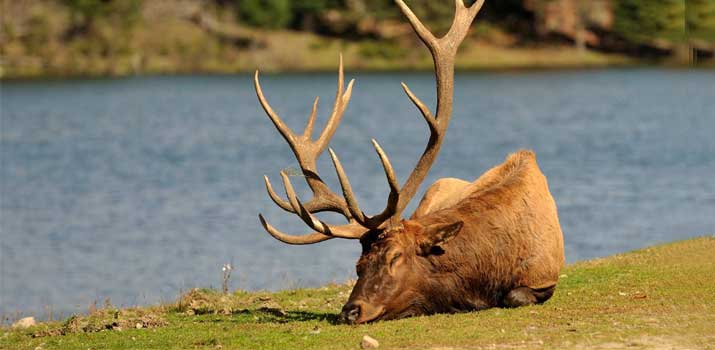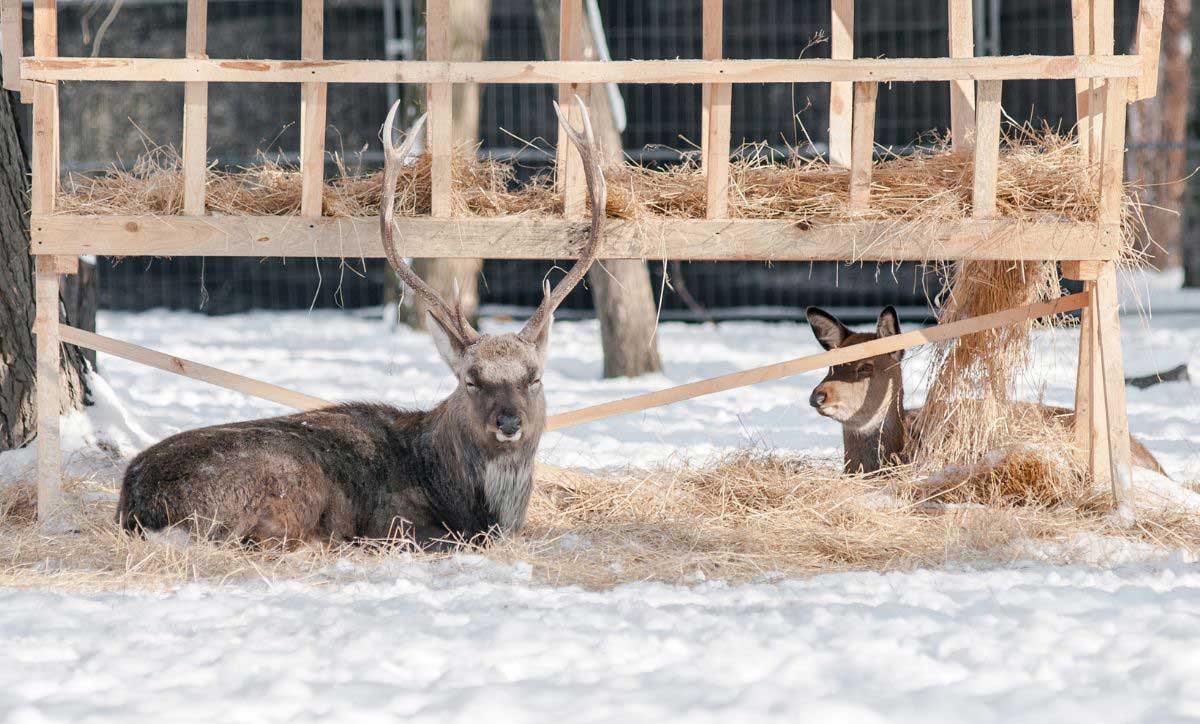
Knowledge is power, and even when you think you know it all, there’s always something new to learn.
This is especially true for animals like the deer. Deers are notoriously shy, quick, and nimble, so learning the ins and outs of their habits and lifestyles can be challenging.
However, if you’ve been searching for a deeper insight into the sleeping habits of these majestic creatures, we’re here to help.
Read on to find out more about the sleeping habits of the deer, their sleeping positions, where fawns sleep, and more.
How Long Do Deer Sleep?
The average human sleeps between seven and nine hours a night.
So, it’d probably be hard to imagine sleeping in 30-second to 3-minute increments, scanning your surroundings, and then going back to sleep.
However, this is standard for the common deer.
The deer sleep cycle consists of extremely short periods of dozing, from just a few seconds to a few minutes.
Each short period is interrupted by a brief alert period, where the deer will scan their environment for potential threats before returning to sleep.
Although they sleep for extremely short periods, the average deer will manage to squeeze in anywhere between four and twelve hours of sleep a day.
However, extended periods of sleep are rare for deer, who often prefer to remain on high alert to protect themselves from predators.
What Time Of Day Do Deer Sleep?
Unlike humans, deer tend to sleep in the daytime. Most deer prefer to snooze between midday and 4 pm, so they’ll be less active during these periods.
Although deer are considered to be nocturnal animals, some will sleep in the late afternoon or early evening; however, this is rare.
If you want to spot a deer in the wild, you’ll have to visit the woods just before dark.
Deer are most active around dusk, and during this time, their main priority is finding food and water, so you’ll often see them roaming freely in the woods.
Where Do Deer Sleep?

Even if you spend plenty of time out in the woods, you’ve probably never seen a deer sleep.
Not only are they likely to spot you before you ever see them, thanks to their incredible sense of hearing, sight, and smell, but unsurprisingly, they prefer to keep themselves tucked away when they’re sleeping.
When deer sleep, they tend to nestle themselves amidst dense, thick foliage, under low-hanging trees, and even out in open fields (as long as the grass is long enough to disguise them).
Deer tend not to have fixed sleeping places, and like most animals, they’ll choose to sleep wherever they feel the most protected from predators.
However, when a deer is looking for a comfortable place to settle down, they’ll often look for three important things:
- Camouflage: Their sleeping spot will need enough coverage to keep them hidden from predators. This is why you’re unlikely to spot deer sleeping out in the open, as they’ll be easily spotted.
- A Quick Escape: Safety is a top priority for the deer. It will only choose to make its bed an area where it has a quick entrance and exit; this way, if a predator invades its space, it has a better chance of survival.
- Food and Water: Lastly, deer prefer to sleep in areas with an adequate supply of food and water. This can be difficult to find, especially because predators in the area are likely to frequent these spots.
Do Deer Sleep In The Same Spot Every Night?
Once a deer finds a good bedding area, it’ll often sleep in it repeatedly. Although they tend to sleep alone, some deer choose to sleep in groups, so you may see more than one in a bedding area.
If they’ve spotted a predator near their bedding area, they’ll relocate as quickly as possible.
They’re also not guaranteed to frequent the same spot every night, even if there are no predators in the area.
Although deers are creatures of habit, they may change bedding areas frequently in search of more food, water, or a more comfortable or secluded spot to sleep in.
What Position Do Deer Sleep In?
Have you ever wondered what deer look like when they sleep? Well, it’s not that different from a cat or a dog!
Once a deer finds a suitable place to sleep, it’ll lower itself to the ground by its front end first and then slightly curl its body around into a ball shape.
Once they’re lying down, the deer will often tuck its head into its side and rest it on the ground or its belly.
Do Deer Hibernate In The Winter?
Contrary to popular belief, deer don’t actually hibernate in the winter. This is a common misconception about deer.
However, although they don’t go into full hibernation like either animals, they’ll certainly slow down during the winter months.
They’ll reduce their physical activity to preserve energy and heat when it’s cold, so you’ll be less likely to see them roaming around as freely as they do in the summer.
In the winter, the deer will seek shelter in any area that’s adequately covered and provides protection from the wind.
In mountainous areas, they’ll favor south-facing slopes, which often provide warmer bedding locations and more sunlight during the day for extra warmth.
Final Thoughts
If you’re hoping to spot a deer sleeping in the wild… it won’t be easy. These animals are hard-wired to prioritize survival and a discreet lifestyle.
Their impeccable senses keep them safe from harm (even when they’re sleeping), and they’ll often choose the most secluded spots.
They may not get as much sleep as us, but their sleeping habits are dictated by their need to protect themselves, which is why short bursts of sleep are preferred over long periods of rest.
A short snooze, followed by a brief period of activity, and repeat, is the way of life for the deer.
